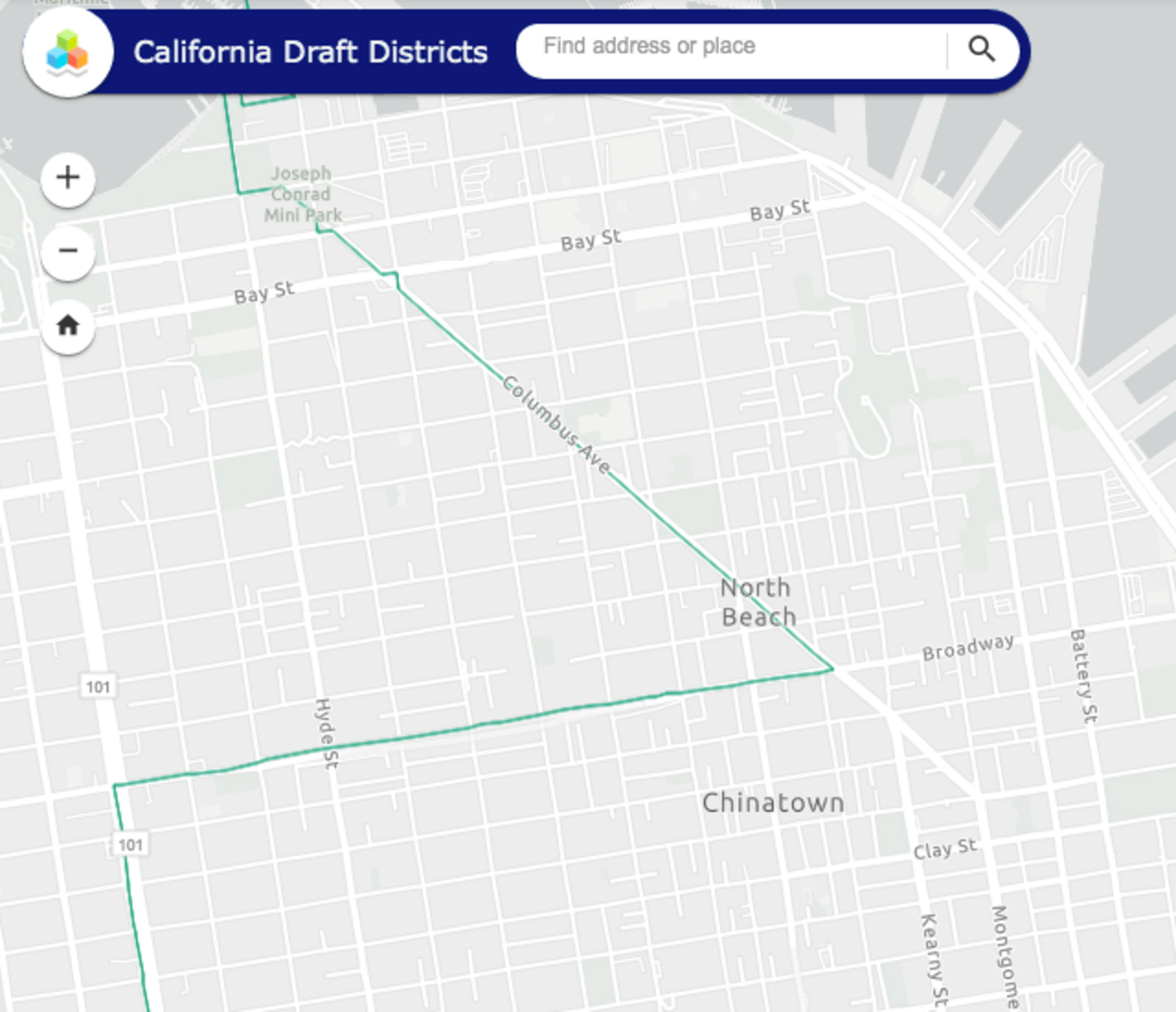Next year, if a tourist walks from the historic Tin Hau Temple to the popular Yuet Lee restaurant in Chinatown, or crosses the street from Washington Square to get desserts at Gelato Delicatessen in North Beach, they might be passing through different electoral districts. While the tourist in question may be blissfully unaware of the local politicking that went into that divide, the two prominent communities involved certainly will not be.
Currently, San Francisco’s electoral line separates the city into east side and west side, Assembly Districts 17 and 19, respectively. But the newly proposed plan cuts the city’s northeastern corner into two halves, shoving the area north of Broadway Street and south of Columbus Street — which includes part of both Chinatown and North Beach — into Assembly District 19.

That has angered community members in both neighborhoods, who want to remain unified in order to maintain their political influence. The California Citizens Redistricting Commission, the author of the plan, has until Dec. 27 to submit their final report to the secretary of state. The new district lines will not affect the special election currently underway for AD-17.
Wing Hoo Leung, the president of Community Tenants Association, which represents over 2,000 low-income immigrants living mostly in Chinatown and North Beach, said that the latest map will separate half of their tenant members into Assembly District 19, the so-called “westside.”
“It doesn’t make sense,” he said, pointing out that some of the nearby residents of Pacific Heights and Marina District have income levels 100 times greater than the Chinatown tenants. Leung worries that if the area is merged to the westside district, “The needs and concerns of our low income immigrant tenants will be invisible and forgotten.”
Daniel Macchiarini, vice president of the North Beach Business Association, called the proposed district lines “insane” at a Friday press conference where he was joined by a dozen other community leaders. “Whoever is doing this has no relationships with our communities.”
Macchiarini emphasized the long intertwined histories of Chinatown and North Beach, two geographically adjoined neighborhoods that are integral to making San Francisco a renowned tourist destination.
The Commission couldn’t be reached for comment as of Monday afternoon.
California’s redistricting happens every 10 years and is based on Census results. The redrawing of San Francisco’s electoral boundaries inevitably spark controversy because communities that share common identities are often split up, which — as is the current case — makes for a highly politicized exercise.
A month ago, an earlier draft of the Commission’s map was accused of diluting the votes of people of color and creating a white majority district. Later, the Commission tossed that plan and redrew the lines, creating the current iteration.
The redraw effort also drew criticism from City Attorney David Chiu, who is Chinese American and formerly represented Chinatown and North Beach at the San Francisco Board of Supervisors.
“You need to keep communities that have common concerns and common issues intact,” Chiu said during the press conference. He slammed the proposal for dividing Chinatown, a community brought together by culture, linguistics, economy, and politics.
The San Francisco Standard reporter David Sjostedt contributed to this report.
